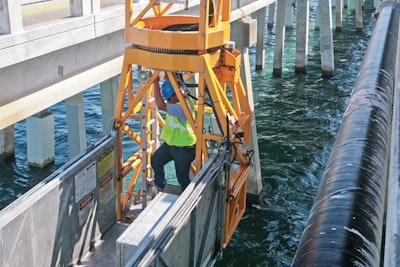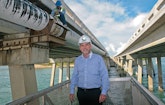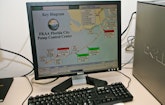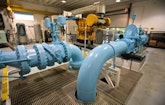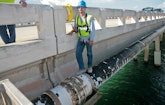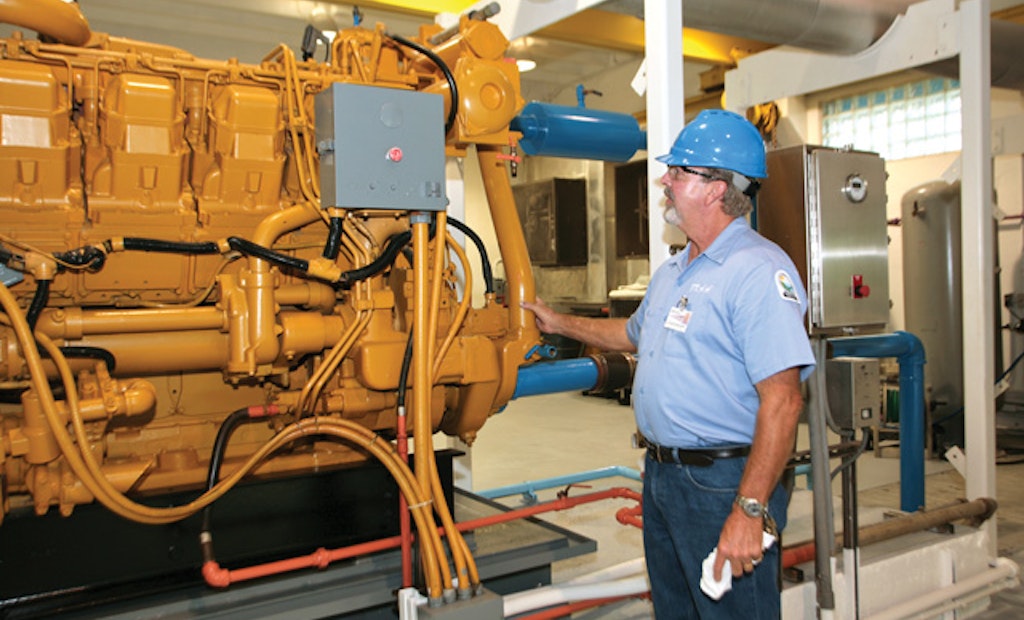
Interested in Flow Control?
Get Flow Control articles, news and videos right in your inbox! Sign up now.
Flow Control + Get AlertsSitting in his office, Roy Coley can see the amount of electrical power being used by the pumps in the vast Florida Keys Aqueduct Authority water distribution network. The authority’s customized power monitoring system continuously records and displays power consumption in cost per thousand gallons pumped and allows operators to make changes in the pumping system if power costs rise above optimum levels.
“Right now, we’re at 21 cents per thousand gallons pumped,” says Coley, director of operations for the authority. “That’s about where we need to be.”
Along with pipe corrosion, the cost of power is the major challenge for the authority as it pumps drinking water from the mainland to the inhabitants of the Keys, a 130-mile-long string of islands that stretches into the Atlantic Ocean off the southern tip of Florida.
“We spend more than $3.5 million a year on electricity, most of it for pumping,” Coley says. “We needed a system that would enable us to monitor and control those costs. When we couldn’t find one suitable for us in the marketplace, we decided to develop our own.” The system has been operational for just a few months, so comprehensive cost data isn’t yet available. But Coley says the authority is already optimizing pumping strategies based on power costs.
Water to paradise
The authority was formed in 1937 to ensure a reliable source of clean drinking water for the Keys. Before that, residents and visitors relied on cisterns to collect rainwater, and on freshwater shipped in from the mainland by railcar or barge.
A steel water pipeline was constructed in 1939 and enlarged in 1980, linking the authority’s J. Robert Dean water treatment plant in Florida City with the chain of islands all the way to Key West. The authority’s motto is “Bringing Water to Paradise.”
The Biscayne Aquifer is the primary water source. At the Dean treatment facility, the water is treated with lime softening, passed through dual-media filters, and dosed with chloramines and fluoride. The plant also includes a reverse osmosis desalination system so that, if demand calls for it, up to 6 million gpd of water from the brackish Floridan Aquifer can be added to the supply.
Five 800 hp motors and a pair of 500 hp motors (SPX Flow Technology vertical turbine and Flowserve units) move the water through the transmission line at pressures up to 250 psi. The pipe begins with a diameter of 36 inches, narrows to 24 inches, and ends at 18 inches. In case of a power outage, the authority maintains four 1,000 hp diesel pumps and 45,000 gallons of fuel in storage. The diesel pumps were run for 28 days continuously after Hurricane Andrew in 1992.
Booster pumping stations at Key Largo, Long Key, Marathon, Ramrod Key and Stock Island maintain the desired line pressures. Distribution pipelines connect with the mainline and carry water into the various communities on the islands. In case of emergencies, a number of storage facilities throughout the system provide 45 million gallons of reserve capacity. Seawater desalination plants at Stock Island and Marathon are available to produce up to 3 million gallons of freshwater if needed.
Monitoring power
Everyone on the authority’s payroll is energy-conscious and works to reduce power consumption. But certain conditions were working against the authority’s ability to achieve the most economical performance.
For one thing, the operators at the pipeline control center in Florida City practiced various pumping strategies based on who was in charge of the pipeline at the time. For another, the authority has a variety of pumps in service along the line, including older and newer models, some variable-speed drive and others constant drive. And three different power suppliers serve the authority: Florida Power and Light at the beginning of the service area and smaller regional companies serving the middle and far western end of the Keys. All have different rate structures.
“We knew we had to reduce our power consumption, but when I talked with our executive director about the situation, it was obvious that turning off the lights and shutting down our computers at night wasn’t going to be enough,” says Coley. At about this point, Coley recalled his earlier days as a water manager in northern Alabama and his visit to a local automobile tire manufacturing plant.
“One of the things that struck me was that they had a system that told them what the power usage was per tire, and as power costs fluctuated, when was the best time to make tires,” Coley says. “If the power costs got too high, they might just shut the line down and send everybody home until the costs came down again.”
The right units
That got him thinking about a similar system for the authority’s water system. “I shared these ideas with our IT people, and they went out into the market, but they couldn’t find anything commercially available that would accomplish what we wanted,” he says. “Finally, we reached out to the engineering firm CH2M HILL and asked them to design such a system for us.”
Coley was adamant on one point: He wanted the system to report energy consumption in cents per thousand gallons. “That’s what we understand in the water business,” he says. “I didn’t want something that expressed results in kilowatt-hours or engineering calculations.”
The system uses monitoring equipment from Schweitzer Engineering Laboratories, positioned at all five of the major pumping stations on the transmission line. The equipment tracks the real-time cost of power from the various suppliers, as well as the power consumption at all pumping stations. There are 14 pumps in the system, supplied by Fairbanks Morse, Aurora, Flygt (Xylem), SPX Flow Technology, Goulds Water Technology and Flowserve.
Depending on the location, the equipment can monitor power consumption at an entire site like a booster station, or at an individual feeder location or specific motor. At each location, a programmable logic controller (PLC) polls the power monitor for the real-time kW, then uses this reading to perform calculations based on the utility rate structure for that site. An additional PLC in Florida City summarizes data from all the other PLCs.
Wonderware (Invensys Operations Management) software reads and displays the values from the PLCs, logs ampere and volt data from each power monitor, and stores these calculated values for historical trending. A dedicated server at Key West generates reports using XLReporter software, and updates the historical database.
Many benefits
Coley ticks off some examples of how the power monitoring system helps his team save on electrical costs:
• By monitoring power consumption and the fluctuating electricity rates, the authority can determine the best (and worst) times to top off the system’s storage tanks.
• The team can use the power suppliers offering the lowest-cost electricity at any given time, limit or higher-cost sources, or eliminate them if their rates are too high.
• Operators can determine whether it is more cost-effective to operate a particular pump at 100 percent of capacity, or keep it at a lower flow rate and supplement the flow with another pump that costs less to operate.
• Operators can track changes in demand (important in view of the transient tourist population) and supply adequate drinking water at lowest possible pumping costs.
While Coley and the authority won’t have specific power costs savings numbers until the system has been in operation for a few more months, he is pleased with the early results. The ability to know the exact cost per thousand gallons pumped at any time, and to see the immediate effects of changes to the pumping protocol, make the system already worth the investment.
Furthermore, “we are enjoying some positive publicity because of the innovation,” says Coley. “We get visitors all the time. They want to see the system in action and ask how we did it.” For water professionals, that’s just one more reason to make a trip to “Paradise.”
